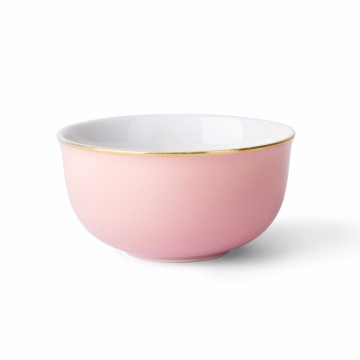The Origins of Matcha and Miso
Matcha and miso hold prominent places in the landscape of Japanese cuisine, with rich histories that reflect the cultural and agricultural evolution of Japan. The origins of matcha trace back to the Tang Dynasty in China, but it gained significant transformation and prominence in Japan during the Muromachi period (circa 1336-1573). During this time, the method of stone grinding green tea leaves into a fine powder was established, which led to the creation of matcha as we know it today. The cultivation of tea in Japan was significantly influenced by Buddhist monks, who introduced this method as part of their meditation practices. These monks recognized the stimulating properties of matcha, which fostered alertness and focus, thereby integrating it into their spiritual traditions.
Essentially, matcha became enveloped in Japan’s ceremonial practices, notably in the tea ceremony (chanoyu). This ritual reflects the values of harmony, respect, purity, and tranquility, showcasing matcha’s role beyond mere consumption. The matcha plant is cultivated primarily in shaded fields, which enhances its vibrant green color and boosts its nutritional profile, positioning it as a staple in modern wellness culture.
Similarly, miso has ancient roots in Japan, with its fermentation process believed to have originated over a thousand years ago. The traditional miso is a fermented paste made primarily from soybeans, salt, and a fermenting agent known as koji mold. This complex fermentation technique not only enriches miso with unique flavors, but it also contributes vital nutrients, making it a key component of the Japanese diet. Throughout the centuries, miso has been celebrated for its umami richness, versatility, and health benefits. Its use in everyday dishes, from soups to marinades, illustrates its integral role in Japanese culinary heritage, symbolizing nourishment and tradition. Through understanding the historical foundations of matcha and miso, one can appreciate their profound significance in Japan's rich culinary tapestry.
The Cultural Significance of Matcha in Japanese Society
Matcha, an integral component of Japanese culture, transcends the boundaries of a mere beverage to embody deep spiritual and aesthetic values. Central to its cultural significance is the Japanese tea ceremony, known as Chanoyu, which is a highly ritualistic preparation and presentation of matcha. This ceremony is not simply about drinking tea but is a meticulously orchestrated event steeped in historical and philosophical dimensions. It serves as a physical expression of harmony, respect, purity, and tranquility—core tenets of Japanese aesthetics.
The preparation of matcha is an art form, where attention to detail plays a critical role. Every step, from the whisking of the vibrant green powder in hot water to the precise serving techniques, reflects a deep reverence for the ingredients and the moment. Practitioners engage in this ritual as a form of meditation, allowing them to focus their minds and appreciate their surroundings fully. This meditative practice reinforces the notion that the act of drinking matcha can facilitate a deeper connection with oneself and the environment.
Moreover, matcha has a unique place in various cultural ceremonies and festivals, reinforcing its importance across generations. It encourages social interactions, fostering a sense of community. Sharing a cup of matcha invites conversation and reflection, enhancing relationships between participants. In contemporary society, this traditional practice continues to thrive, even as it adapts to modern contexts—illustrating matcha's enduring relevance.
Thus, matcha is not merely a drink; it is a vessel for cultural expression and a profound practice that resonates with the ideals of Japanese society. This beverage encapsulates a way of life that embraces mindfulness, community, and the appreciation of beauty, underscoring its significance in the hearts of the Japanese people.
Miso: The Heart of Japanese Cuisine
Miso, a fermented soybean paste, serves as a quintessential ingredient in Japanese cuisine, renowned for its rich flavor and remarkable versatility. It embodies the heart of Japanese cooking, offering an array of taste experiences across various dishes. Traditionally, miso is classified into three primary types: white (shiro), yellow (shin), and red (aka). Each type exhibits distinct flavor profiles shaped by variations in fermentation time and the ingredients used. White miso tends to have a sweeter and milder taste, while red miso delivers a deeper umami flavor, making it ideal for hearty dishes.
The health benefits of miso are also notable. It is a source of protein, dietary fiber, vitamins, and minerals, contributing to a nutritious diet. Additionally, miso contains beneficial probiotics due to its fermentation process, which can support digestive health and bolster the immune system. Including miso in one’s diet not only enhances flavor but also promotes overall well-being.
Miso's versatility is on full display in traditional dishes. The iconic miso soup, a staple in Japanese households, showcases the comforting nature of this ingredient. The soup typically combines miso with dashi (a Japanese broth) and a variety of ingredients such as tofu, seaweed, and green onions, making it a nutritious and flavorful meal option. Miso is also frequently used in marinades and dressings, often blended with ingredients like sesame oil, vinegar, and citrus to create a flavor-packed accompaniment for grilled meats or salads.
In essence, miso not only enriches the culinary landscape of Japan but also represents a fundamental component of its cultural identity. This vibrant ingredient embodies the deep respect for umami flavors in Japanese cooking, illustrating why it is revered as the heart of Japanese cuisine.
Creating Memorable Experiences: Incorporating Matcha and Miso into Modern Cooking
In recent years, both matcha and miso have gained global acclaim for their unique flavors and health benefits. These traditional Japanese ingredients provide an excellent opportunity to create memorable culinary experiences in your kitchen. Incorporating matcha into beverages and desserts is a delightful way to enjoy its distinctive taste while also reaping its health advantages, such as enhanced focus and antioxidant properties. A simple yet effective recipe is the matcha latte. To make this, whisk one teaspoon of high-quality matcha powder with a small amount of hot water until smooth. Then, gradually add steamed milk of your choice and sweeten to taste. This refreshing beverage not only showcases the vibrant color of matcha but also offers a comforting warmth, perfect for any time of day.
When it comes to desserts, matcha can elevate classic recipes. Consider making matcha-flavored muffins or brownies by substituting a portion of the flour with matcha powder. This not only adds a distinct flavor but also introduces a stunning green hue that can impress your guests. Another popular option is matcha ice cream, which combines creamy textures with the earthy notes of green tea, making it a delightful treat during warmer months.
Miso, on the other hand, is incredibly versatile in savory dishes. It can be used to enhance soups, marinades, and dressings. A simple way to incorporate miso into your cooking is by making a miso dressing for salads. Combine one tablespoon of miso paste with rice vinegar, a touch of sesame oil, and a hint of honey. Drizzle this over fresh greens and vegetables for a deliciously umami-packed addition to your meal.
The rising popularity of matcha and miso reflects a growing trend in the culinary world towards more health-conscious and flavor-forward ingredients. By embracing these traditional flavors in contemporary cooking, you can create your own 'matcha moments' and 'miso memories' in the kitchen, delighting both yourself and those you share your meals with.







